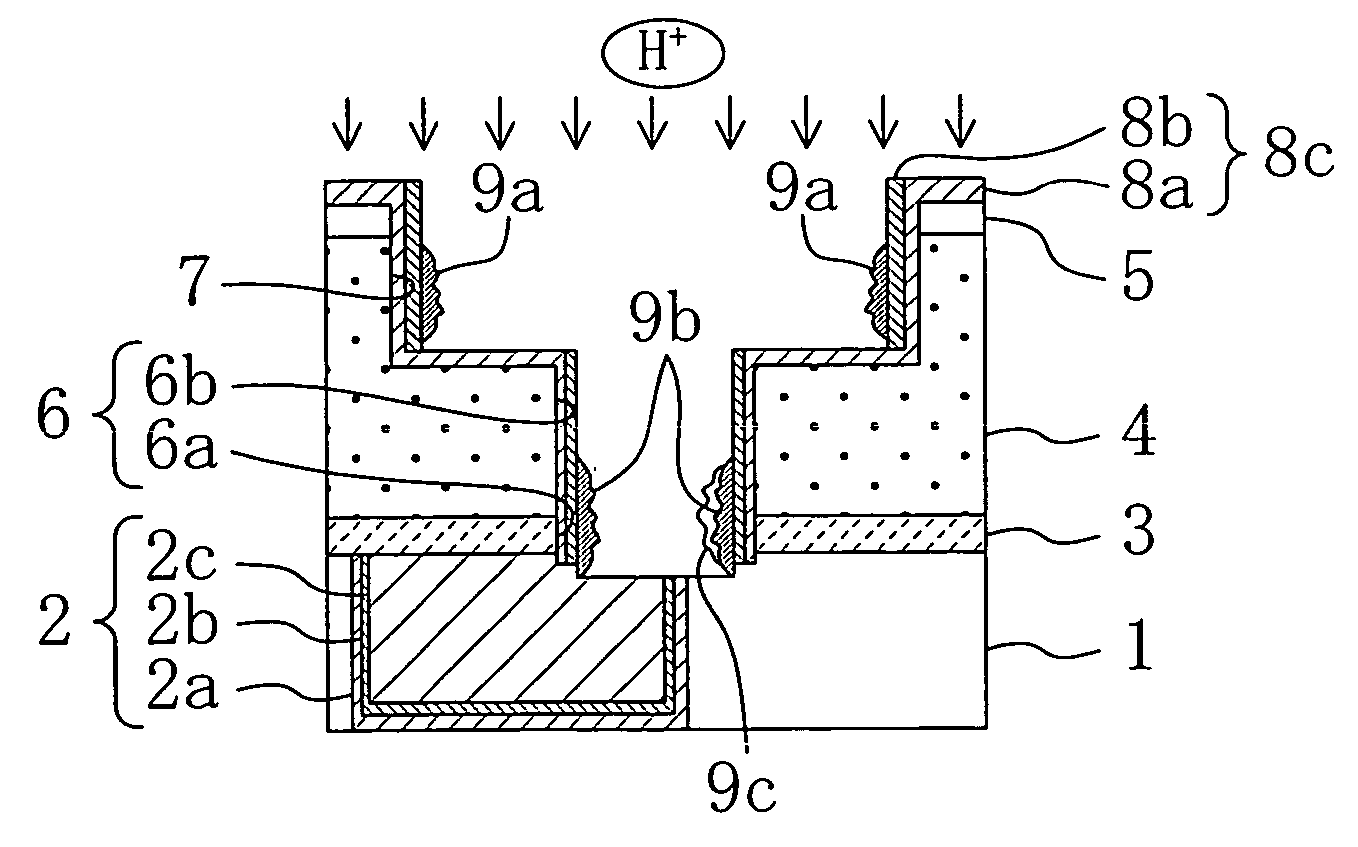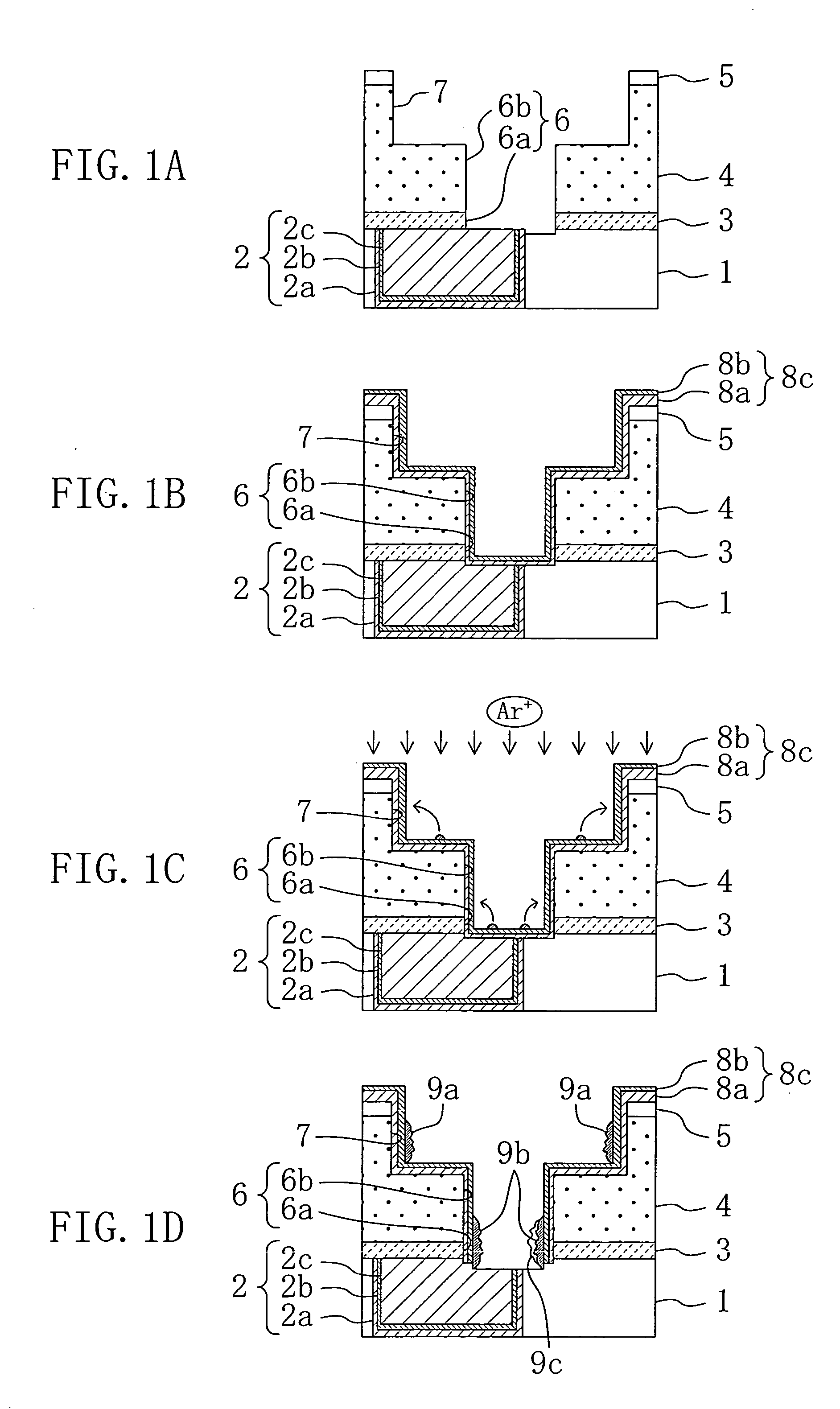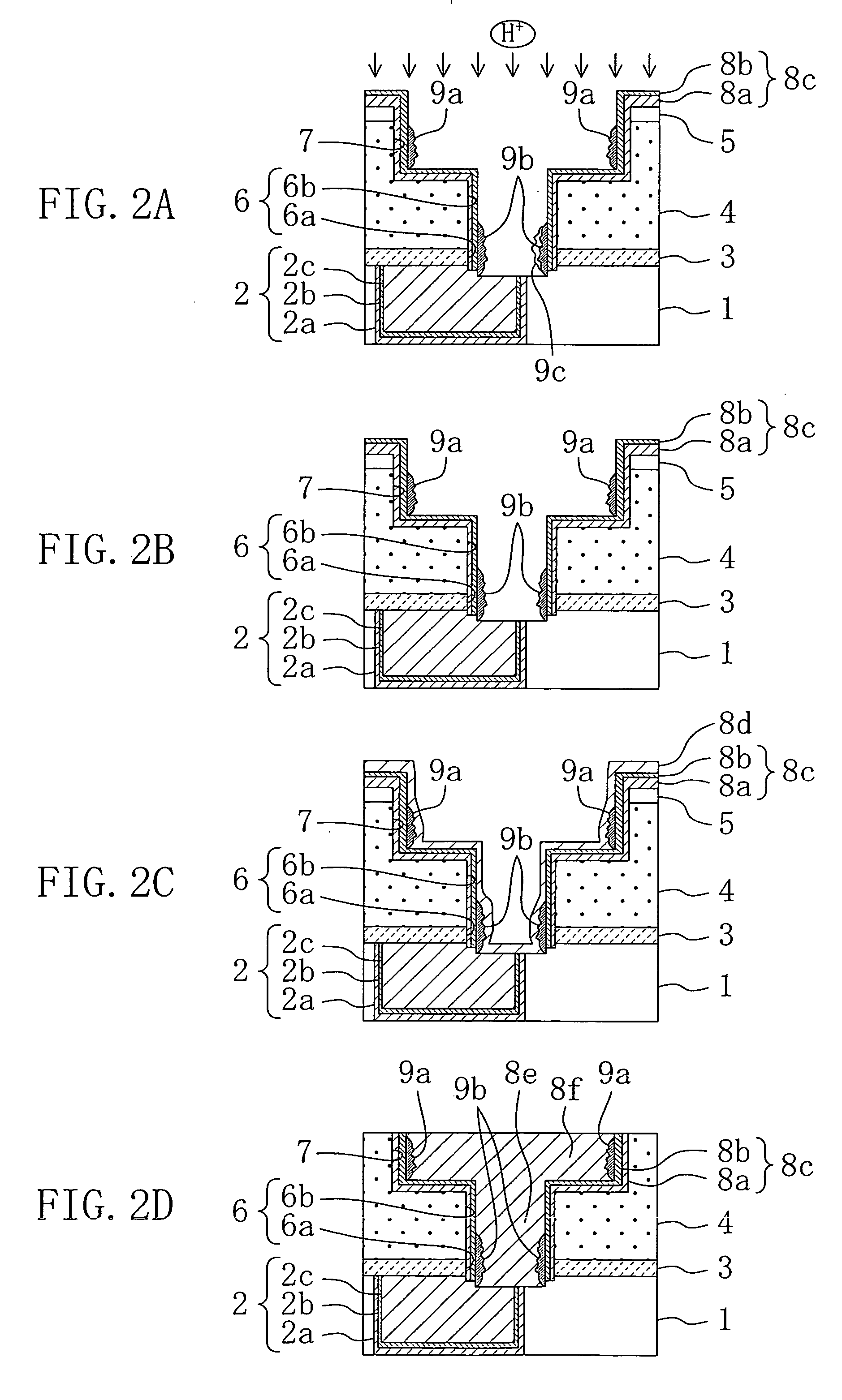Method for fabricating electronic device
a technology of electronic devices and wire forming, which is applied in the direction of semiconductor devices, semiconductor/solid-state device details, electrical devices, etc., can solve the problems of voids created in the lower layer wiring, metal film has a discontinuous portion, and the interlayer insulating film cannot be guaranteed, so as to prevent the increase of low dielectric constant film and reduce the wiring capacitance
- Summary
- Abstract
- Description
- Claims
- Application Information
AI Technical Summary
Benefits of technology
Problems solved by technology
Method used
Image
Examples
embodiment 1
[0062] Embodiment 1
[0063] A method for fabricating an electronic device according to a first embodiment of the invention will be described with reference to FIGS. 1A to 1D and FIGS. 2A to 2D.
[0064]FIGS. 1A to 1D and FIGS. 2A to 2D are cross sections each showing a state where an electronic device is designed without an alignment margin between a connection hole and a wiring formed in a lower layer, and the connection hole is deviated from the wiring formed in the lower layer due to misalignment or dimensional variations which occur at the time of lithography for forming the connection hole or dimensional variations which occur at the time of dry etching.
[0065] As shown in FIG. 1A, first, a first wiring trench pattern is formed by photolithography in a first insulating film 1 made of a silicon oxide film formed on a silicon substrate (not shown), and dry etching is performed on the first insulating film 1, thereby forming a first wiring trench having a depth of 250 nm in the first ...
embodiment 2
[0096] Embodiment 2
[0097] A method for fabricating an electronic device according to a second embodiment of the invention will now be described with reference to FIGS. 3A to 3C and FIGS. 4A to 4C.
[0098] First, in the second embodiment, the processes shown in FIGS. 1A and 1B in the first embodiment are performed in a manner similar to the first embodiment.
[0099] Next, by performing sputter etching using argon gas as shown in FIG. 3A, the tantalum nitride film 8a and the tantalum film 8b exposed from the bottom of the connection hole 6 are removed and a natural oxide film existing on the interface with the first barrier metal film 8c is removed.
[0100] The sputter etching using argon gas is performed so that the first barrier metal film 8c formed on the bottom of the second wiring trench 7 and the surface of the third insulating film 5 exist as shown in FIG. 3B which will be described later. Alternately, etching may be performed so that the tantalum film 8b remains in a manner simil...
PUM
 Login to View More
Login to View More Abstract
Description
Claims
Application Information
 Login to View More
Login to View More - R&D
- Intellectual Property
- Life Sciences
- Materials
- Tech Scout
- Unparalleled Data Quality
- Higher Quality Content
- 60% Fewer Hallucinations
Browse by: Latest US Patents, China's latest patents, Technical Efficacy Thesaurus, Application Domain, Technology Topic, Popular Technical Reports.
© 2025 PatSnap. All rights reserved.Legal|Privacy policy|Modern Slavery Act Transparency Statement|Sitemap|About US| Contact US: help@patsnap.com



